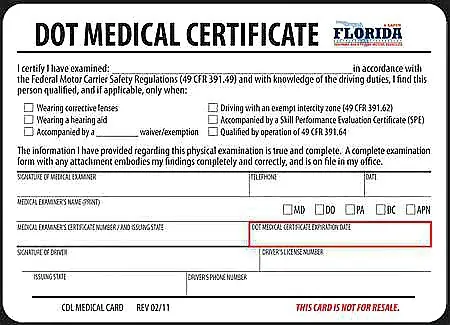Are you ready to take the wheel and drive into a fulfilling career in commercial driving? Knowing the California CDL requirements is quite instrumental in opening your horizons to this vibrant field. California requires specific eligibility criteria, starting with age limits to medical tests, knowledge, and ability tests to ensure that all drivers travel safely and competently on the road. This in-depth guide takes you through each step involved to ensure ease of navigation through rules and regulations. If you are ready to hit the road as a licensed commercial driver, operational procedures are to be observed and followed in application for California’s CDL requirements followed herein.
California CDL requirements
California law dictates that for operating certain commercial vehicles, drivers must specifically meet specific eligibility criteria. Below, we take a look at the key requirements for obtaining a CDL in California.
Age requirement
To apply for a Commercial Driver’s License (CDL) in California, the first step is fulfilling the age requirement. The age limits vary as per the kind of driving you will perform:
- 18 years old: You may apply for a CDL at 18 years of age; however, you are restricted to intrastate driving, which means you may only drive a commercial vehicle within California. You are also not allowed to carry hazardous materials.
- 21 years old: You must be at least 21 years of age to drive interstate (across state lines), transport hazardous materials, or operate vehicles requiring certain endorsements such as passenger or tanker.
Application documentation requirements
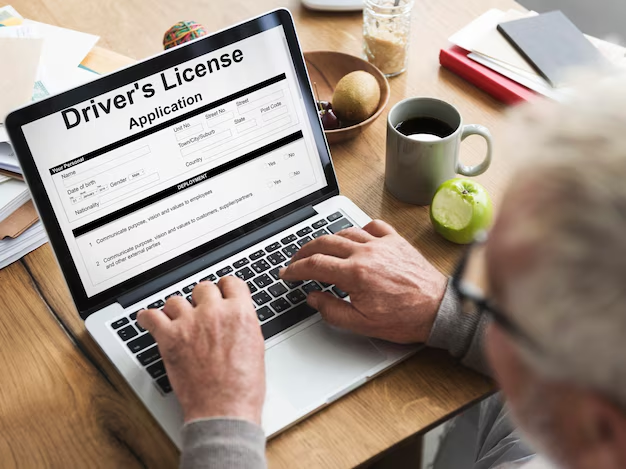
When submitting a Commercial Driver’s License application in California, the right documentation should be provided. The California DMV will require an applicant to prove his identity, residency, and eligibility. A detailed list of such documents is provided below.
1. Identity verification
You must present official identification proving your identity in the following ways:
- You hold a valid non-expired California driver’s license or ID card.
- Your document is a passport or passport card issued by the United States.
- A certified birth certificate or other official government documents.
2. Proof of residency in California
You must prove residency in California. Some examples of acceptable documents are:
- Utility bills such as electric, water, or gas with your name and address.
- Rental agreements or mortgage documents.
- Employment records or tax returns that list a California address.
3. Social Security number
Your Social Security Number should be confirmed to verify its association with your identity. Acceptable documents will include:
- The actual Social Security card.
- A W-2 form or pay stub showing the full SSN.
4. Proof of legal residence qualification
Documentation legalizing your presence in the U.S. must be documented by the non-citizen resident here to show that one lives and works legally in the United States. This evidence shall include one or more of these forms indicated:
- A valid Permanent Resident Card (Green Card).
- A valid Employment Authorization Document (EAD).
- Other DHS (Department of Homeland Security) approved documents.
5. Completed CDL application
You will be required to fill out and submit a special form issued by the California DMV. The CDL application wherein you will supply personal information, your driving history, and all endorsements or restrictions applied for.
6. Payment for fees
Be ready to pay the required application fees. The application fees vary according to the type of CDL and endorsements needed.
Driving record eligibility requirements
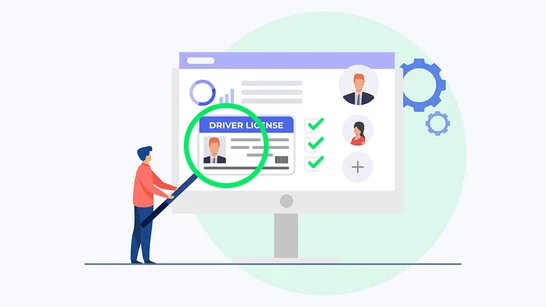
Your driving record is very important as far as eligibility for a Commercial Driver’s License (CDL) in California is concerned. The Department of Motor Vehicles (DMV) requires applicants to meet stringent criteria to guarantee responsible and safe driving. Below is a detailed analysis of what is evaluated as well as key eligibility factors:
1. A clean driving history
To be eligible, the applicant should have a driving history with no major infractions or incidents. Disqualifying offenses include:
- Driving Under the Influence (DUI): A history of DUIs may lead to outright denial or deferment in obtaining your CDL.
- Reckless driving: Any record of reckless driving shows unsafe behavior, making you ineligible.
- License suspensions or revocations: Suspensions or revocations especially within the last three years will disqualify you.
2. No major traffic violations
The eligibility requirements extend to minor infractions repeated over and above major infractions like speeding seriously, hit-and-run incidents, or police fleeing. Above all, you must maintain a clean driving record.
3. Compliance with previous traffic citations
An unresolved driving ticket plus unpaid fines or failure to appear in court may even lead to suspension of a license, which renders you ineligible to apply for a CDL. Clear out all outstanding citations before you submit your application.
4. No federal disqualifications
According to federal regulations, a person is barred from obtaining a CDL if he/she has committed the following offenses using a commercial motor vehicle:
- Using a commercial vehicle to commit a felony.
- Operating/commercial vehicle without a valid CDL.
5. Infractions related to CDL
If you had a previous CDL in another state, ensure that there are no pending violations or disqualifications. California would check the Commercial Driver’s License Information System (CDLIS) to prove your eligibility.
Medical requirements
All applicants applying for a Commercial Driver’s License have to meet specific medical standards as mandated by both state and federal laws. These regulations ensure that drivers of commercial vehicles can safely drive large vehicles, even for long distances under challenging conditions.
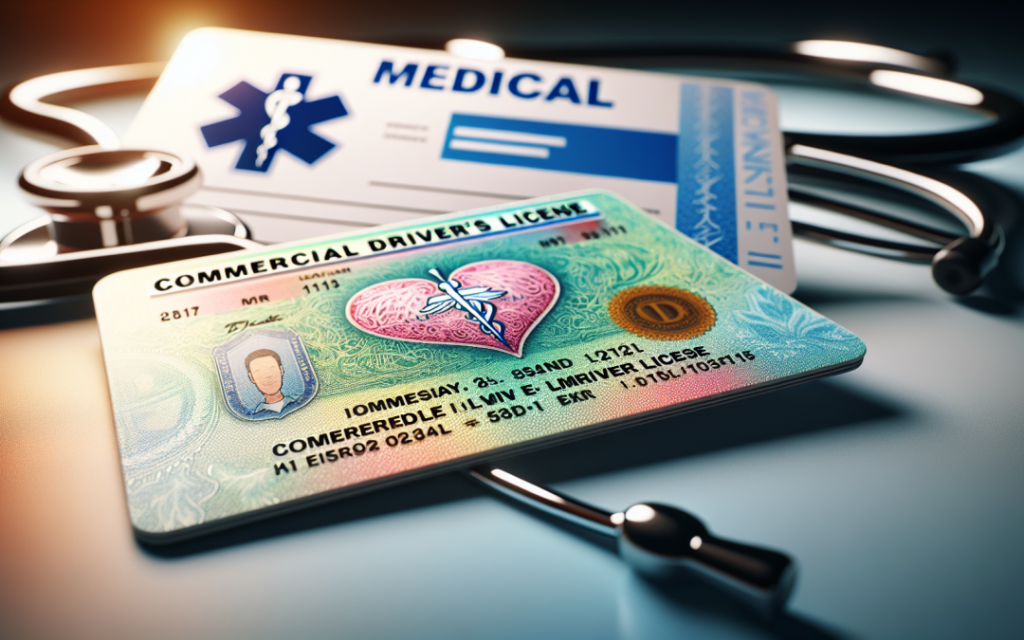
The main prerequisite for being able to acquire a CDL license in California is passing a Department of Transportation medical examination. This means that the examination should be done by a qualified medical examiner registered on the Federal Motor Carrier Safety Administration National Registry. Once you complete the examination, the medical examiner will provide you with a Medical Examiner’s Certificate (MEC) if you’ve passed the necessary criteria of health standards for physical fitness to drive a commercial vehicle.
Noted: Certain health conditions could prevent you from getting a CDL, such as:
- Vision impairment (you need to have at least 20/40 vision in each eye).
- Uncontrolled diabetes.
- Severe hearing loss.
- Cardiovascular conditions, like high blood pressure or a heart condition.
- Seizure disorders (need to have gone seizure-free for a period).
- Substance abuse.
Knowledge tests requirements

The knowledge test measures your knowledge concerning safe driving practices, how to operate a vehicle, and special laws that relate to the operation of commercial vehicles. It is required that, prior to taking the CDL skills test, an applicant first obtains a Commercial Learner’s Permit, which allows them to practice under the supervision of a licensed CDL holder. Here’s a breakdown of the knowledge test requirements:
1. General knowledge test
All applicants for CDL must take the general knowledge test. Some of the basic and essential items it covers:
- Fundamentals of control and operation of vehicles.
- Safest driving practices.
- Traffic etiquette and regulations relevant to commercial drivers.
- Hazard recognition and risk management.
The test often contains 50 multiple-choice and requires a minimum of 80% to pass.
2. Endorsement tests (if applicable)
Besides the general knowledge test, you will also take additional endorsement tests, which depend on the type of commercial vehicle that you will be driving. Some common endorsements are for:
- P endorsement – Passenger.
- H endorsement – Hazardous materials.
- N endorsement – Tank vehicle.
- T endorsement – Double/triple trailers.
- S endorsement – School bus.
- X endorsement – Hazmat & Tank.
Each endorsement follows a set of questions, but all the questions pertain to the rules and regulations involved in that endorsement.
3. Air brakes test (if applicable)
If you are going to drive vehicles that have air brakes, then you will have to take and pass the Air brakes test. This will cover the operation and maintenance of air brake systems including:
- How air brakes work.
- Pre-trip inspection of airbrake systems.
- Safety procedures in case of air brake failure.
If you fail the air brakes test, your CDL will be restricted, and you won’t be allowed to drive vehicles equipped with air brakes.
4. Combination vehicle test (if applicable)
If you are going to drive a combination vehicle, like a tractor-trailer or semi-truck, you will need to take the Combination test. This test includes:
- Operating and maneuvering combination vehicles.
- Coupling and uncoupling procedures.
- Safe driving practices for combination vehicles.
Take the California CDL practice tests here!
Training requirements
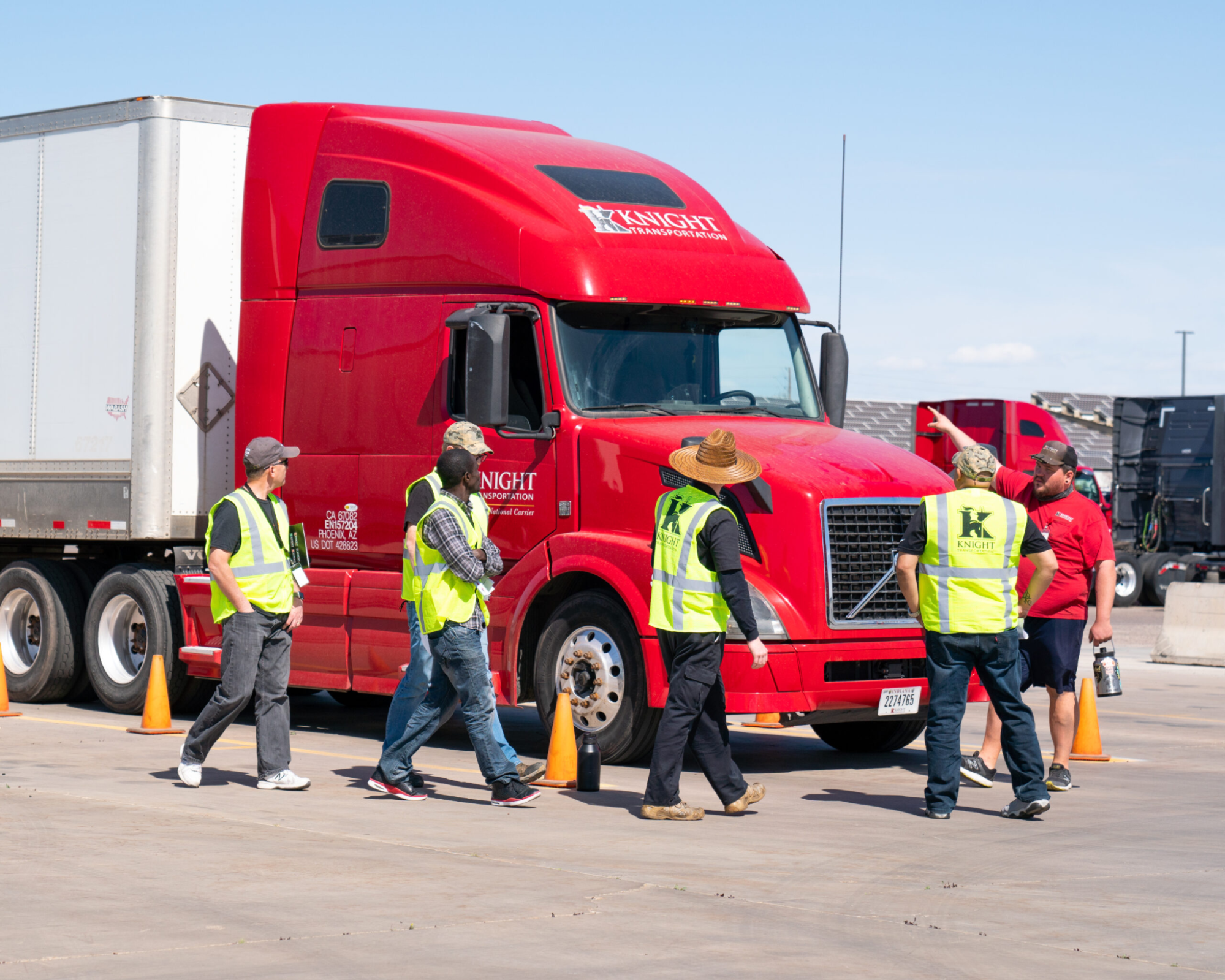
California requires applicants seeking a CDL to complete Entry-Level Driver Training as prescribed by FMCSA. This includes:
- First-time Class A or B CDL applicants.
- Drivers seeking an upgrade from Class B to Class A CDL.
- Applicants adding endorsements.
Key training components:
- Theory training: Vehicle systems, regulations, inspections, and safe driving practices. A minimum score of 80% or higher must be attained to pass.
- BTW Training: Actual behind-the-wheel driving and basic vehicle maneuvers and road safety skills, completed with a qualified trainer.
Training must occur with a training provider that is listed on the FMCSA Training Provider Registry (TPR). When you have finished the training, it will be recorded, and you will be able to sign up for your CDL skills test.
Skills tests requirements
Passing the skills test is a major milestone in getting a CDL in California, and this ensures that you can safely operate your commercial vehicle in on-road situations. There are primarily three parts to the test:
- Pre-trip vehicle inspection.
- Basic vehicle control skills.
- On-road driving.
Take the California CDL Pre-trip inspection practice test right now!
FAQs
1. Do I have to take the DOT medical exam for a CDL in California?
Yes, you need to take the DOT medical exam to obtain a CDL in California. This will ensure that you meet the minimum physical and medical standards to safely operate a commercial motor vehicle. The exam must be by a certified medical examiner who is on FMCSA’s National Registry, and you need to get a Medical Examiner’s Certificate.
2. What vehicles require a CDL in California?
In California, a CDL is required for:
- Vehicles with a gross vehicle weight rating (GVWR) of 26,001 pounds or more.
- Large vehicles that carry 16 or more passengers, including the driver.
- Vehicles hauling hazardous material that requires a placard.
3. Who is required to have a CDL in California?
CDL is mandatory for drivers who operate commercial vehicles like trucks, buses, and tankers. Drivers operating special vehicles such as double trailers or hazardous material carriers also need a CDL.
Final thoughts
Meeting the California CDL requirements is of the essence for you to be adequately prepared to safely operate commercial vehicles. Every step from completing training and knowledge tests to meeting medical and driving record standards means something in the process of equipping you for success. Begin your journey today by practicing every day, enrolling in a certified training program, taking that first step on your path to earning your CDL, and embarking on a very rewarding career in commercial driving!


